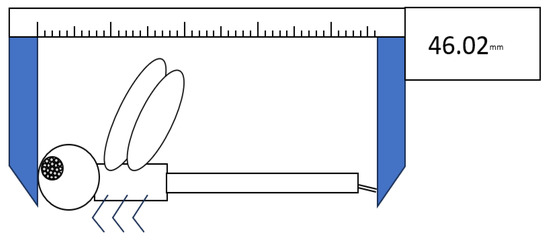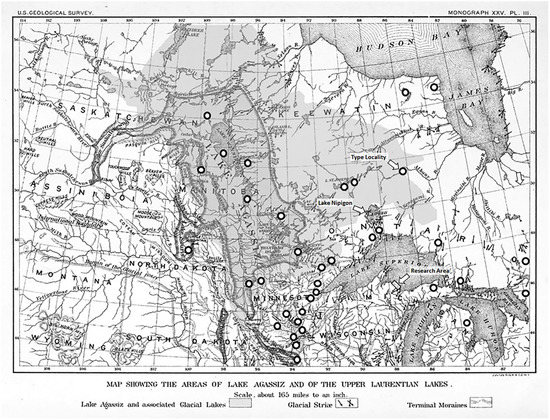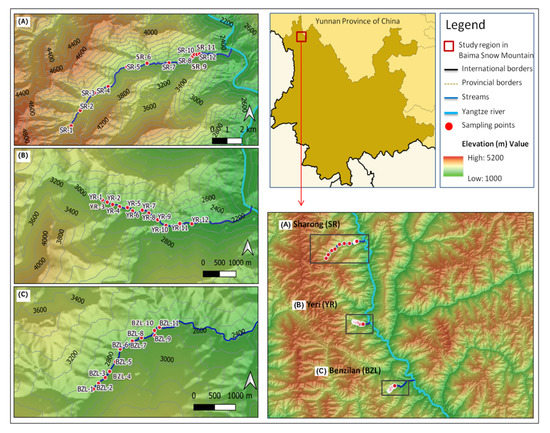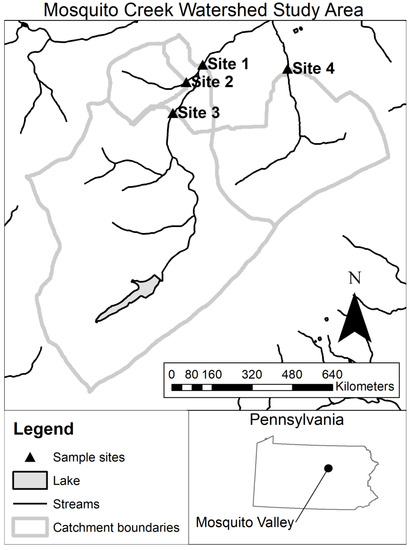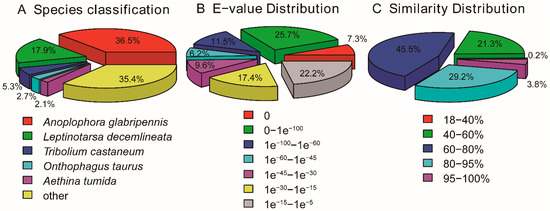Ecology and Biology of Aquatic Insects
Share This Topical Collection
Editors
 Prof. Dr. John R. Wallace
Prof. Dr. John R. Wallace
 Prof. Dr. John R. Wallace
Prof. Dr. John R. Wallace
E-Mail
Website
Collection Editor
Department of Biology, Millersville University, Millersville, PA 17551, USA
Interests: mosquitoes/pathogen transmission ecology; aquatic entomology; stream ecology
 Dr. Scott M. Starr
Dr. Scott M. Starr
 Dr. Scott M. Starr
Dr. Scott M. Starr
E-Mail
Website
Collection Editor
Biology Department, Hampden-Sydney College, Hampden-Sydney, VA 23943, USA
Interests: aquatic entomology; landscape ecology; community ecology; odonata; climate change
Topical Collection Information
Dear Colleagues,
Aquatic insect research has expanded significantly over the last half century, focusing on population dynamics, predator/prey interactions, competition, trophic ecology, as well as their use in management applications in the role they play in water quality assessment. While interest in aquatic insects has increased, there is a great deal that remains unclear in terms of their life histories, biology, and ecology that is essential to sustainably manage aquatic ecosystems, especially with how they respond to anthropogenically-driven changes to habitats, climate, and an overall global environment.
The articles in this Topical Collection will focus on the different fields of Ecology and Biology of Aquatic Insects and author scientists could contribute with their expertise to provide further understanding of the natural histories, ecology, and biology of larval and adult aquatic insects relevant to lotic and lentic aquatic ecosystems.
Prof. Dr. John R. Wallace
Dr. Scott M. Starr
Collection Editors
Manuscript Submission Information
Manuscripts should be submitted online at www.mdpi.com by registering and logging in to this website. Once you are registered, click here to go to the submission form. Manuscripts can be submitted until the deadline. All submissions that pass pre-check are peer-reviewed. Accepted papers will be published continuously in the journal (as soon as accepted) and will be listed together on the collection website. Research articles, review articles as well as short communications are invited. For planned papers, a title and short abstract (about 100 words) can be sent to the Editorial Office for announcement on this website.
Submitted manuscripts should not have been published previously, nor be under consideration for publication elsewhere (except conference proceedings papers). All manuscripts are thoroughly refereed through a single-blind peer-review process. A guide for authors and other relevant information for submission of manuscripts is available on the Instructions for Authors page. Insects is an international peer-reviewed open access monthly journal published by MDPI.
Please visit the Instructions for Authors page before submitting a manuscript.
The Article Processing Charge (APC) for publication in this open access journal is 2600 CHF (Swiss Francs).
Submitted papers should be well formatted and use good English. Authors may use MDPI's
English editing service prior to publication or during author revisions.
Keywords
- aquatic entomology
- lentic/lotic aquatic ecosystems
- life history
- community structure
- pollution impacts
Published Papers (9 papers)
Open AccessArticle
Watershed-Mediated Ecomorphological Variation: A Case Study with the Twin-Striped Clubtail Dragonfly (Hylogomphus geminatus)
by
Joseph S. Girgente and Nancy E. McIntyre
Viewed by 1347
Abstract
Anthropogenic land-cover change is modifying ecosystems at an accelerating rate. Changes to ecomorphologically variable taxa within those ecosystems serve as early-warning signs that resources on which humans and other animals depend are being altered. One known ecomorphologically variable taxon is
Hylogomphus geminatus,
[...] Read more.
Anthropogenic land-cover change is modifying ecosystems at an accelerating rate. Changes to ecomorphologically variable taxa within those ecosystems serve as early-warning signs that resources on which humans and other animals depend are being altered. One known ecomorphologically variable taxon is
Hylogomphus geminatus, a species of dragonfly in the southeastern United States that shows pronounced variation in total body length across its limited geographic range. We measured total length of live as well as preserved museum specimens of
H. geminatus and the sympatric species
Progomphus obscurus (as a means for comparison). Both species showed significant size differences linked to HUC-8 watersheds in which they occur.
H. geminatus showed additional significant differences on either side of the Apalachicola River, Florida, for all comparisons by sex. In overlapping watersheds, the species tended to show the same trends in length relative to their respective averages. Smaller body length was associated with more urban and agricultural land cover. These findings indicate that ecomorphological variation is tied to the watershed scale and point to significant variations on either side of the Apalachicola River. More thorough future analyses would be needed to verify trends in body length and identify the drivers behind them.
Full article
►▼
Show Figures
Open AccessArticle
Mosquito (Diptera: Culicidae) Diversity and Community Structure in Doi Inthanon National Park, Northern Thailand
by
Wichai Srisuka, Chayanit Sulin, Wirat Sommitr, Rampa Rattanarithikul, Kittipat Aupalee, Atiporn Saeung and Ralph E. Harbach
Cited by 6 | Viewed by 2593
Abstract
Urbanization and human activities create new suitable aquatic habitats for the immature stages of mosquitoes in many countries. This also applies to Doi Inthanon National Park in northern Thailand, which is named for the highest mountain in the country. Despite its popularity, there
[...] Read more.
Urbanization and human activities create new suitable aquatic habitats for the immature stages of mosquitoes in many countries. This also applies to Doi Inthanon National Park in northern Thailand, which is named for the highest mountain in the country. Despite its popularity, there is no information regarding mosquito diversity and community structure in the different ecosystems of the park. Monthly collections of immature stages from various habitats were conducted from August 2004 to December 2005 using dipping and sucking methods. The specimens collected from each habitat were reared to adults and identified based on their morphology. Diversity parameters and community structure were statistically analyzed. A total of 140 species (3795 specimens) belonging to 15 genera were identified. Among these, four genera (
Culex,
Aedes,
Anopheles, and
Uranotaenia) had high species richness, each represented by 48, 27, 19, and 15 species, respectively.
Aedes albopictus was the most relatively abundant species, representing 6.7% of the total number of captured specimens, followed by
Tripteroides aranoides (5.6%) and
Cx. mimulus (5%). Species richness in natural habitats was significantly higher than in artificial containers. Species richness and abundance were highest in the rainy season. In comparison to agricultural areas and villages, mosquito diversity was found to be higher in forest areas. Ground pools, stream pools, rock pools, bamboo stumps, bamboo internode, and rice fields were the most preferred natural habitats. The results indicate that Doi Inthanon National Park has a high mosquito diversity. Each species exhibits differences in abundance and distribution in different habitats, which is useful information for planning conservation measures and vector control in the park.
Full article
►▼
Show Figures
Open AccessArticle
An Ecological Profile of Hydropsyche alternans (Trichoptera: Hydropsychidae) in Lake Superior, the Last Stronghold of a Once-Dominant Great Lakes Surf Zone Caddisfly
by
Sam Miess, Alissa Chrisekos and Mac Strand
Cited by 3 | Viewed by 2726
Abstract
We studied the life history, diet, and trophic ecology of
Hydropsyche alternans in four rocky sites located along the south-central coast of Lake Superior. The
H. alternans life history and broad trophic niche space were similar to those of its riverine relatives. Quantitative
[...] Read more.
We studied the life history, diet, and trophic ecology of
Hydropsyche alternans in four rocky sites located along the south-central coast of Lake Superior. The
H. alternans life history and broad trophic niche space were similar to those of its riverine relatives. Quantitative sampling over the course of one ice-free season revealed that most individuals lived univoltine life histories that featured early to mid-summer mating, and oviposition and rapid growth and development through summer into fall. Most individuals overwintered as ultimate or penultimate larval instars. Pupation followed ice-out in the spring. Gut content sampling and δ
13C and δ
15N stable isotope analyses indicated that the typical larval diet is a mix of benthic, pelagic, and terrestrial food resources, including diatoms, small arthropods, sloughed periphyton, and in one site, fugal hyphae apparently of foredune origin. As a suspension-feeding omnivore that relies on waves and currents to deliver food to its nets,
H. alternans larvae form energetic links between coastal, nearshore, and offshore food webs. These connections have been lost throughout the lower Laurentian Great Lakes as a consequence of the invasion and spread of
Dreissena mussels.
Full article
►▼
Show Figures
Open AccessArticle
Dispersal and Migration Patterns of Freshwater Semiaquatic Bugs
by
Tomáš Ditrich
Viewed by 2225
Abstract
Semiaquatic bugs (Hemiptera: Heteroptera: Gerromorpha) are mostly wing-polymorphic species with flight dispersal as an important life history trait, but the specific flight ability and dispersal pattern remain unexplored in most species. This report presents the results of a long-term survey based on the
[...] Read more.
Semiaquatic bugs (Hemiptera: Heteroptera: Gerromorpha) are mostly wing-polymorphic species with flight dispersal as an important life history trait, but the specific flight ability and dispersal pattern remain unexplored in most species. This report presents the results of a long-term survey based on the individual marking of more than 23,000 specimens of eight water striders (Gerridae) and a water cricket
Velia caprai (Veliidae). Three distinct lentic habitats were sampled (solitary fishponds, systems of nearby fishponds and systems of small, often temporary pools) and one lotic habitat—a small forest stream. Recaptures revealed that three gerrid species tend to stay at the breeding site, but can differ in dispersal via the water surface. Reproductive flightless females disperse most actively via the water surface, possibly bypassing the trade-off between dispersal and reproduction. One species has a sex-dependent dispersal pattern, with females being rather philopatric, whereas males often disperse. Three other gerrid species are highly dispersive and tend to change breeding site.
V. caprai, the only lotic species included in this survey, tend to move upstream and possibly compensate for the downstream drift.
Full article
►▼
Show Figures
Open AccessArticle
Ephemeroptera (Mayflies) Assemblages and Environmental Variation along Three Streams Located in the Dry-Hot Valleys of Baima Snow Mountain, Yunnan, Southwest China
by
Muhammad Farooq, Xianfu Li, Lu Tan, Davide Fornacca, Yanpeng Li, Nima Cili, Zhen Tian, Lu Yang, Xiaoling Deng, Shuoran Liu and Wen Xiao
Cited by 3 | Viewed by 2655
Abstract
Mountain freshwater ecosystems are threatened all over the world by a range of human-induced stresses, ensuing in a rapid loss of habitats and species diversity. Many macroinvertebrates are reactive to habitat disturbance, and mayflies (Ephemeroptera) are amongst the most sensitive groups. Despite they
[...] Read more.
Mountain freshwater ecosystems are threatened all over the world by a range of human-induced stresses, ensuing in a rapid loss of habitats and species diversity. Many macroinvertebrates are reactive to habitat disturbance, and mayflies (Ephemeroptera) are amongst the most sensitive groups. Despite they are susceptible to environmental deviation, knowledge concerning their species richness and diversity is still unknown in remote areas. The objectives of this study were to (1) investigate the mayfly species assemblage and community composition along different mountain streams and assess potential differences, and (2) identify the environmental variation and its influence on the structure of mayfly communities within such freshwater systems. We collected biological and environmental data from 35 sites situated along elevation gradients in the Baima Snow Mountain, northwest Yunnan, China. Multivariate analyses were performed on the environmental variables and the mayfly species composition, as well as on richness and diversity indices. We found that the community composition of mayflies was different across all three watercourses. Among the 18 Ephemeroptera taxa identified,
Baetis sp. and
Baetiella marginata were highly dominant, accounting for over 50% of the dissimilarity of each stream. In terms of species assemblages, almost all sites in the Yeri stream hosted good-quality habitats for several mayfly species, as reflected by the highest species richness. The Benzilan stream followed, whereas the Sharong stream showed relatively low mayfly assemblage. This variation was explained by the high environmental heterogeneity between the three watercourses. In particular, the RDA model revealed that among the different environmental factors analyzed, altitude, conductivity, total dissolved solids, water temperature, dissolved silicon, and pH explained most of the variation in species composition. Moreover, the altitude alone explained 17.74% of the variation, and in-depth analysis confirmed its significant effect on diversity indices. Further research should focus on evaluating the scale of threats to this important group of insects in the mountain freshwater ecosystem, particularly the impact of human-induced disturbances such as land use/landcover alterations.
Full article
►▼
Show Figures
Open AccessArticle
Vertical Migration of Adult Plecoptera and Trichoptera above Forested Headwater Streams
by
Ruric O. Bowman and Robert F. Smith
Viewed by 1876
Abstract
Stream insects are essential components of aquatic and terrestrial ecosystem structure and function. Terrestrial stages are important components of terrestrial food webs, and flight-capable individuals are responsible for long-distance dispersal. Horizontal migrations by flying or crawling adults away from stream channels that link
[...] Read more.
Stream insects are essential components of aquatic and terrestrial ecosystem structure and function. Terrestrial stages are important components of terrestrial food webs, and flight-capable individuals are responsible for long-distance dispersal. Horizontal migrations by flying or crawling adults away from stream channels that link insects to riparian food webs and movements across catchment boundaries are well established through empirical research, but studies examining vertical migration of adult stream insects into forest canopies are generally lacking. This study focused on differences in adult Plecoptera and Trichoptera abundance at ground level versus the riparian canopy and differences in abundances among summer and autumn sampling periods to empirically demonstrate use of canopy ecosystems by stream insects. Malaise traps at ground level and canopy traps placed 8 to 10 m above the stream at four sites in the Mosquito Creek watershed (Pennsylvania) were used to examine vertical migration. Larval assemblages were collected and compared to adult assemblage to investigate patterns of local migration in the catchment. We found significantly more stream insects at ground level than in the forest canopy for Trichoptera, Plecoptera, and all individual plecopteran families, but a meaningful number of individuals were found in the riparian canopy. Canopy abundances were similar to abundances captured in adjacent ground-level habitats in other studies. Comparisons of adult and larval abundances among sites, taxa, and stages indicated site- and taxon-specific patterns for vertical movement into riparian canopies. Demonstrating that adult stream insects utilize riparian forest canopies indicates that riparian forest conservation should be prioritized over reforestation and that several potential research questions exist to inform riparian management.
Full article
►▼
Show Figures
Open AccessArticle
Factors Influencing the Distribution of Endemic Damselflies in Vanuatu
by
Natalie A. Saxton, Erica M. Paxman, Abigail M. Dean, Colin R. Jensen, Gareth S. Powell and Seth M. Bybee
Cited by 3 | Viewed by 2172
Abstract
Vanuatubasis Ober and Staniczek is a genus of damselfly endemic to Vanuatu. Little is known about the distribution and general natural history of the genus. We present the results of 14 weeks of fieldwork in Vanuatu to provide a better understanding of the
[...] Read more.
Vanuatubasis Ober and Staniczek is a genus of damselfly endemic to Vanuatu. Little is known about the distribution and general natural history of the genus. We present the results of 14 weeks of fieldwork in Vanuatu to provide a better understanding of the biology of this genus. Specifically, we tested ecological niche models to predict the presence of
Vanuatubasis throughout the region and explored how water pH may play a role in their distribution and ecology. The results of this fieldwork refined our model and further predicted the presence of this genus on additional islands. We also found stream pH as a strong predictor for the presence of
Vanuatubasis, with their presence in alkaline streams significantly higher (
p < 0.001). The mean pH for those streams where the genus was collected was 8.44 (
n = 53).
Full article
►▼
Show Figures
Open AccessCommunication
Molecular Characterization of Donacia provosti (Coleoptera: Chrysomelidae) Larval Transcriptome by De Novo Assembly to Discover Genes Associated with Underwater Environmental Adaptations
by
Haixia Zhan, Youssef Dewer, Cheng Qu, Shiyong Yang, Chen Luo, Liangjun Li and Fengqi Li
Cited by 1 | Viewed by 1881
Abstract
Donacia provosti (Fairmaire, 1885) is a major pest of aquatic crops. It has been widely distributed in the world causing extensive damage to lotus and rice plants. Changes in gene regulation may play an important role in adaptive evolution, particularly during adaptation to
[...] Read more.
Donacia provosti (Fairmaire, 1885) is a major pest of aquatic crops. It has been widely distributed in the world causing extensive damage to lotus and rice plants. Changes in gene regulation may play an important role in adaptive evolution, particularly during adaptation to feeding and living habits. However, little is known about the evolution and molecular mechanisms underlying the adaptation of
D. provosti to its lifestyle and living habits. To address this question, we generated the first larval transcriptome of
D. provosti. A total of 20,692 unigenes were annotated from the seven public databases and around 18,536 protein-coding genes have been predicted from the analysis of
D. provosti transcriptome. About 5036 orthologous cutlers were identified among four species and 494 unique clusters were identified from
D. provosti larvae including the visual perception. Furthermore, to reveal the molecular difference between
D. provosti and the Colorado potato beetle
Leptinotarsa decemlineata, a comparison between CDS of the two beetles was conducted and 6627 orthologous gene pairs were identified. Based on the ratio of nonsynonymous and synonymous substitutions, 93 orthologous gene pairs were found evolving under positive selection. Interestingly, our results also show that there are 4 orthologous gene pairs of the 93 gene pairs were associated with the “mTOR signaling pathway”, which are predicted to be involved in the molecular mechanism of
D. provosti adaptation to the underwater environment. This study will provide us with an important scientific basis for building effective prevention and control system of the aquatic leaf beetle
Donacia provosti.
Full article
►▼
Show Figures
Open AccessEditorial
Ecology and Biology of Aquatic Insects
by
Scott M. Starr and John R. Wallace
Cited by 7 | Viewed by 3889
Abstract
The advancement of our knowledge on the ecology and biology of aquatic insects is essential to improving our understanding of their roles in water quality, disease ecology, as indicators of climate change, biodiversity, as well as community structure and ecosystem functioning [...]
Full article






